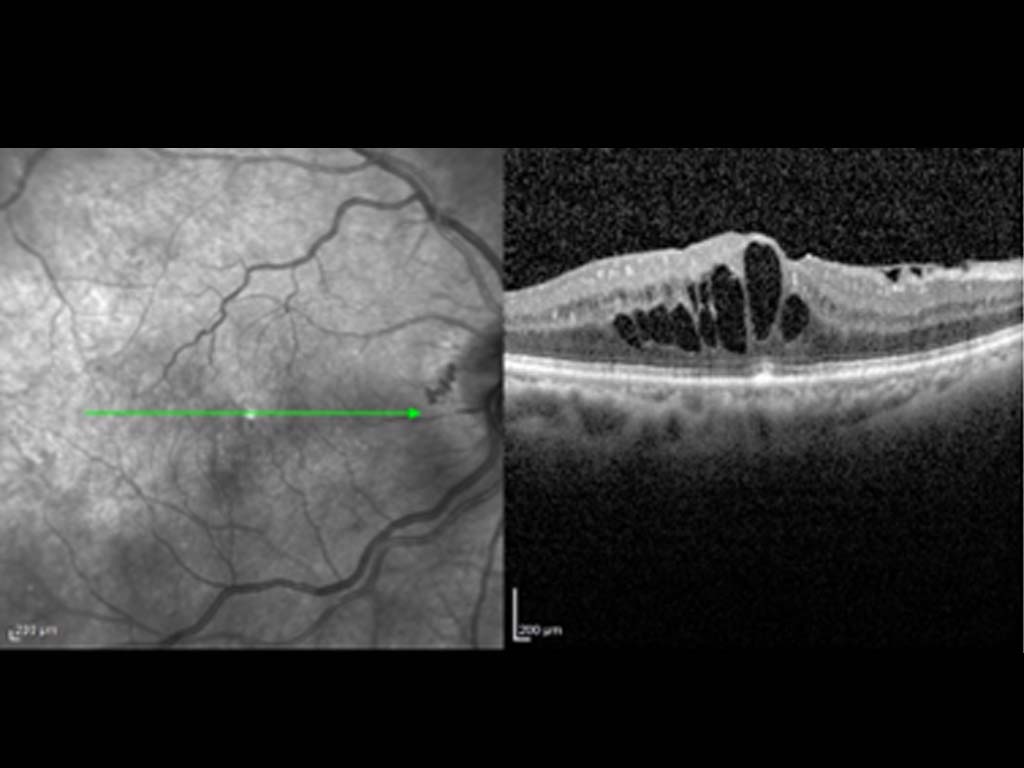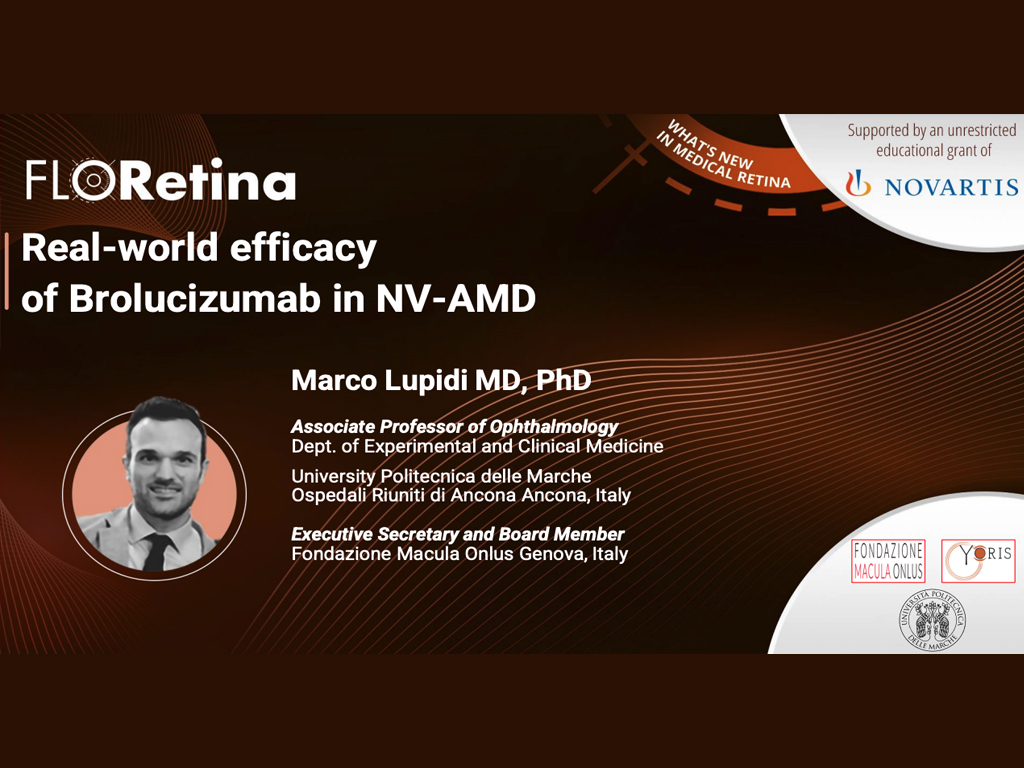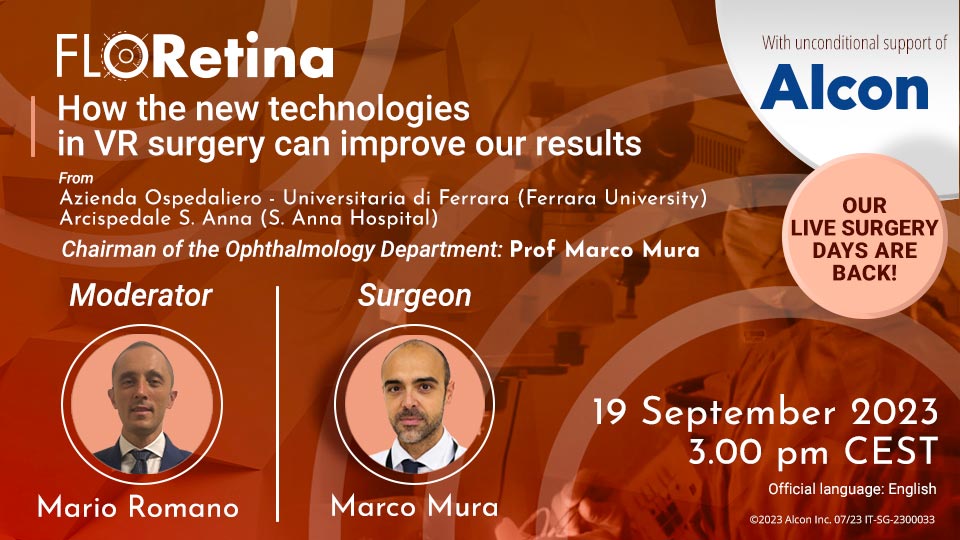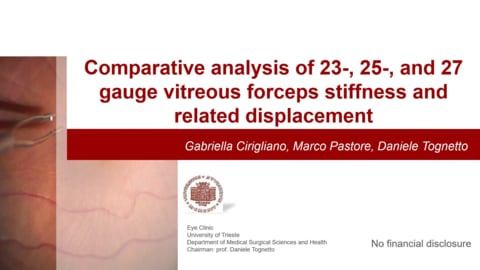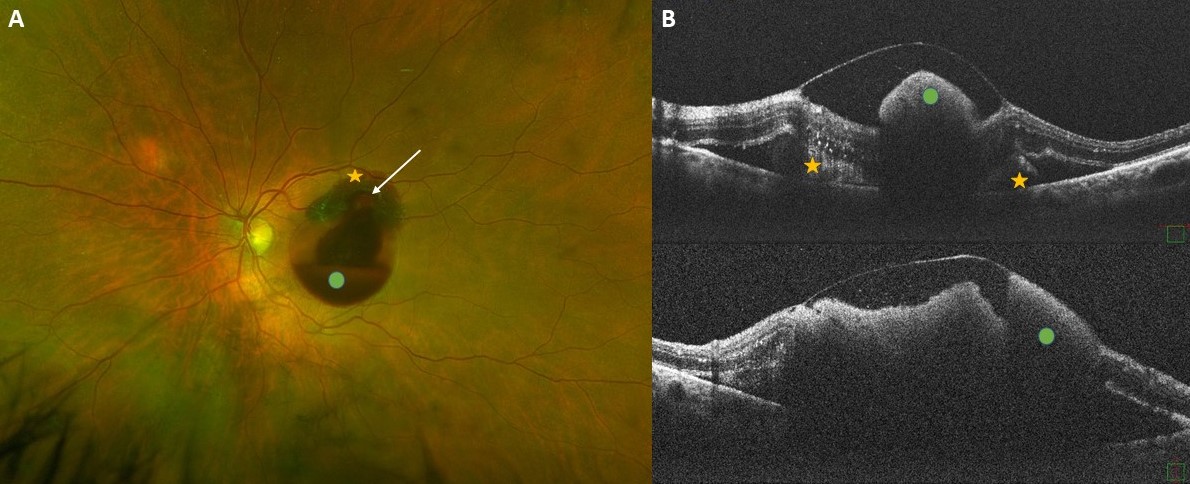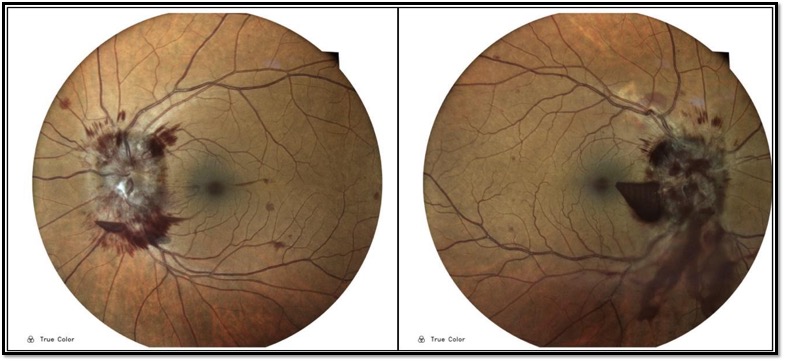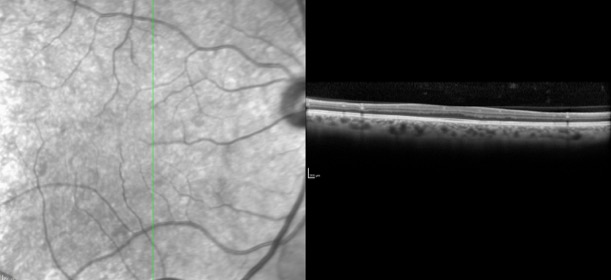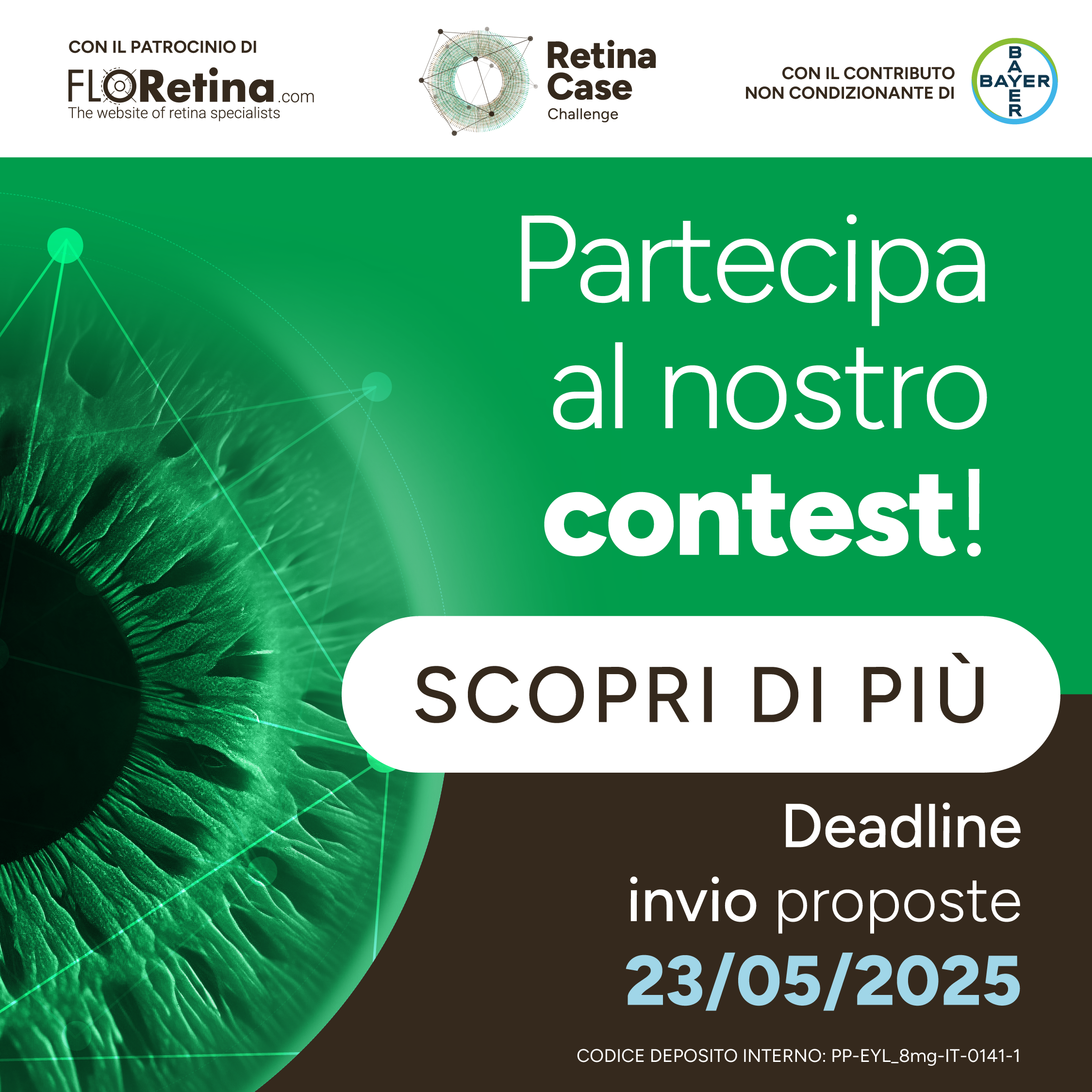Congress
Information
Please note: this year, FLORetina-ICOOR 2025 will be held jointly with the 5th World Retinopathy of Prematurity (ROP) Congress.
-
December 04 - December 07, 2025
-
Florence, Fortezza da Basso
-
For info: secretariat@floretina.com
Congress Website ROP Congress 2025
Webinars, live surgeries and events
Floretina Live
Floretina.com offers a number of live webinars on different topics throughout the year. They are
traditionally planned on Tuesday, at 6.30pm CET/CEST, but if that does not fit with your time
zone, you can always watch the webcast at any time, as we record all sessions and upload them in
the Webinars Archive.
Next events
Past events
Past
surgeries
Focus on
MYOPIA AND RELATED COMPLICATIONS
The incidence in the world of nearsightedness is on the rise. The association with other ocular diseases and the impact of myopia complications are quite frequent. Discover our new section with lessons on medical and surgical topics, webinars on new treatment opportunities.

June 16, 2025, 6.30 PM CEST
Critical thinking on Myopia and Myopia Progression
Faculty: Dominique Brémond-Gignac, Luca Buzzonetti, Paolo Nucci, Arne Ohlendorf, Isabella Puddu, Giuliano Stramare

Video presentation
Surf the presentations on myopia associated diseases held during FLORetina-ICOOR 2024.
Watch now
Video presentation
Surf the presentations on myopia associated diseases held during FLORetina-ICOOR 2023.
Watch now
AI in Ophthalmology
This is the hub where retinal imaging meets artificial intelligence to redifine the features of Ophthalomology and Oculomics.
Outstanding speakers held a very interesting session during FLORetina-ICOOR 2024, presenting innovation and cutting-edge technology .
Let’s get inspiration and take the challenges of this new era.
FLORetina - ICOOR Meeting 2024
Listen to the presentations of the session organized by Daniela Bacherini and Tunde Peto, moderated by Maria Cristina Savastano and Daniel Ting
Watch more...Oculomics
Oculomics is rapidly emerging as a powerful tool for disease prediction, early diagnosis, and patient triage.
Listen to the presentations of the session chaired by Daniela Bacherini, Francesco Faraldi, Tunde Peto, Sandrine Zweifel and several Free Papers

Breaking news
Hot topics from editors
The editorial team* at Floretina.com is committed to select the news of the month. We
will interview established physicians, as well as young ophthalmologists, scientific advisors
and Industry representatives. Register on the website to receive news notifications!
*Timothy Norris has been working for ten years in medical communication in
the field of ophthalmology. He regularly collaborates as journalist, medical writer and
copywriter with influential newspapers and specialised agencies, including Ocular
Surgery News, Eyeworld, Retina Today and Media Mice. He is currently working for the
media agency Etcetera Communication.
ZEISS MyoCare update results at ARVO 2025 confirm sustained efficacy
Jun 09, 2025After satisfactory results provided last year, ZEISS presented an update for their two major on-going multicentre clinical trials for MyoCare lenses on both Asian and Caucasian children at this year's ARVO meeting in Salt Lake City, USA demonstrating further their continuing efficacy to slow the progression of myopia in children. Read more
Floretina-Icoor
Scientific news

Editorials
Diabetic macular edema: OCT retinal biomarkers as predictive factors of treatment response and long-term visual outcome
Diabetic retinopathy (DR) is the leading cause of blindness in working-aged people worldwide[1]. Diabetic macular edema (DME) occurs in nearly 12% of patients with DR and represents a frequent complication of diabetes resulting from disruption of blood-retinal barrier and accumulation of fluid in the retina, which can lead to significant central visual loss if left untreated[2]. Read more
Floretina
Videolibrary
This section features the video recordings of
- the live surgery sessions held during the past editions of Floretina Meetings
- the live surgery sessions webcasted from a specific Centre
Search video
Live surgery from meetings
Live surgery from streaming
Floretina.com will be also happy to publish surgical videos submitted by users:
we welcome you to upload yours
Send your videoFloretina
Lecture from past meetings
Search Lecture

The repository of retina images
Image bank
We welcome professionals, researchers, industry contributors who are registered on Floretina.com to upload and share their diagrams and figures illustrating retinal anatomy or clinical techniques, case series, and ultrasound images. Please read our terms of use and upload your picture.
View the image banks Send your image banksSearch image bank
Imaging of a retinal arterial macroaneurysm
(A) Ultra-widefield fundus imaging shows a case of a 74-year-old woman with a ruptured retinal arterial macroaneurysm (white arrow) in the left eye. Preretinal (green dot) and subretinal hemorrhages (yellow asterisks) are visible at the posterior pole. (B) Optical coherence tomography examination obtained in the acute phase shows large amount of sub-inner limiting membrane hemorrhage (greendots) with outer-layer shadowing, subretinal hyperreflective material (yellow astetisks) and a pocket of subretinal fluid.
VIEW IMAGE BANKBilateral papilledema associated with retinal hemorrhagic appearance as earliest sign of spinal cord tumor
A 57-year-old obese patient admitted to our ophthalmic department complaining of bilateral sense of eye swelling and mild blurring vision. The anterior segment and pupillary reflex were normal on ophthalmological testing. Likewise, eye movements were preserved and she did not report diplopia in any position of gaze. Dilated fundus examination revealed bilateral hemorrhagic papilledema, pre-retinal hemorrhages in both eyes, dot and blot hemorrhages in the peripheral retina. Visual acuity was 20/20 in both eyes. Routine hematological investigations revealed increased both Von Willebrand factor and ristocetin factor and LAC positivity. The lumbar puncture (LP) showed elevated cerebrospinal fluid (CSF) proteins. Magnetic resonance imaging (MRI) with contrast of brain and spinal cord showed signs of intracranial hypertension and the presence of two lesions in continuity with each other respectively located at T12-L1 and L1-L2. Radiologic features were compatible with the diagnosis of ependymoma. A surgical procedure was conducted and confirmed the diagnosis after anatomical pathology analysis.
Isolated Foveal Hypoplasia
A-60-year-old female patient without remarkable ocular and/ or systemic history referred for a routine eye examination. Best corrected visual acuties were 20/25 in both eyes. SD-OCT scan cutting through the center revealed lack of foveal pit. In OCT-A slabs, FAZ was not appreciated at superficial and deep capillary plexus levels. She was diagnosed as isolated foveal hypoplasia.
VIEW IMAGE BANK
Young ophthalmologists retinal imaging society
Clinical cases
Clinical case of the month
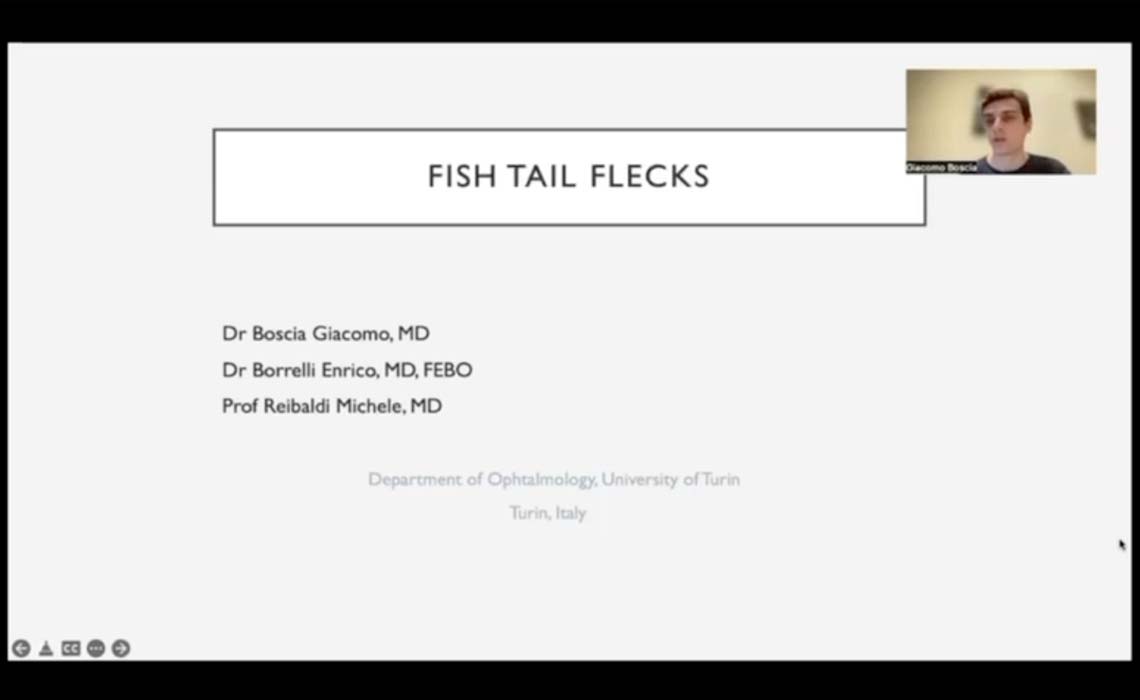
Fish Tail flecks
A 55-year-old male patient was referred to our medical retina unit for bilateral vision loss occurred in the last year. Fundus examination revealed bilateral macular atrophy with foveal sparing surrounded by yellowish ‘fish tail flecks’ all over the posterior pole. SD-OCT, FAF, FA and ERG were performed. Genetic evaluation confirmed diagnosis of Stargardt Disease.
Read more










